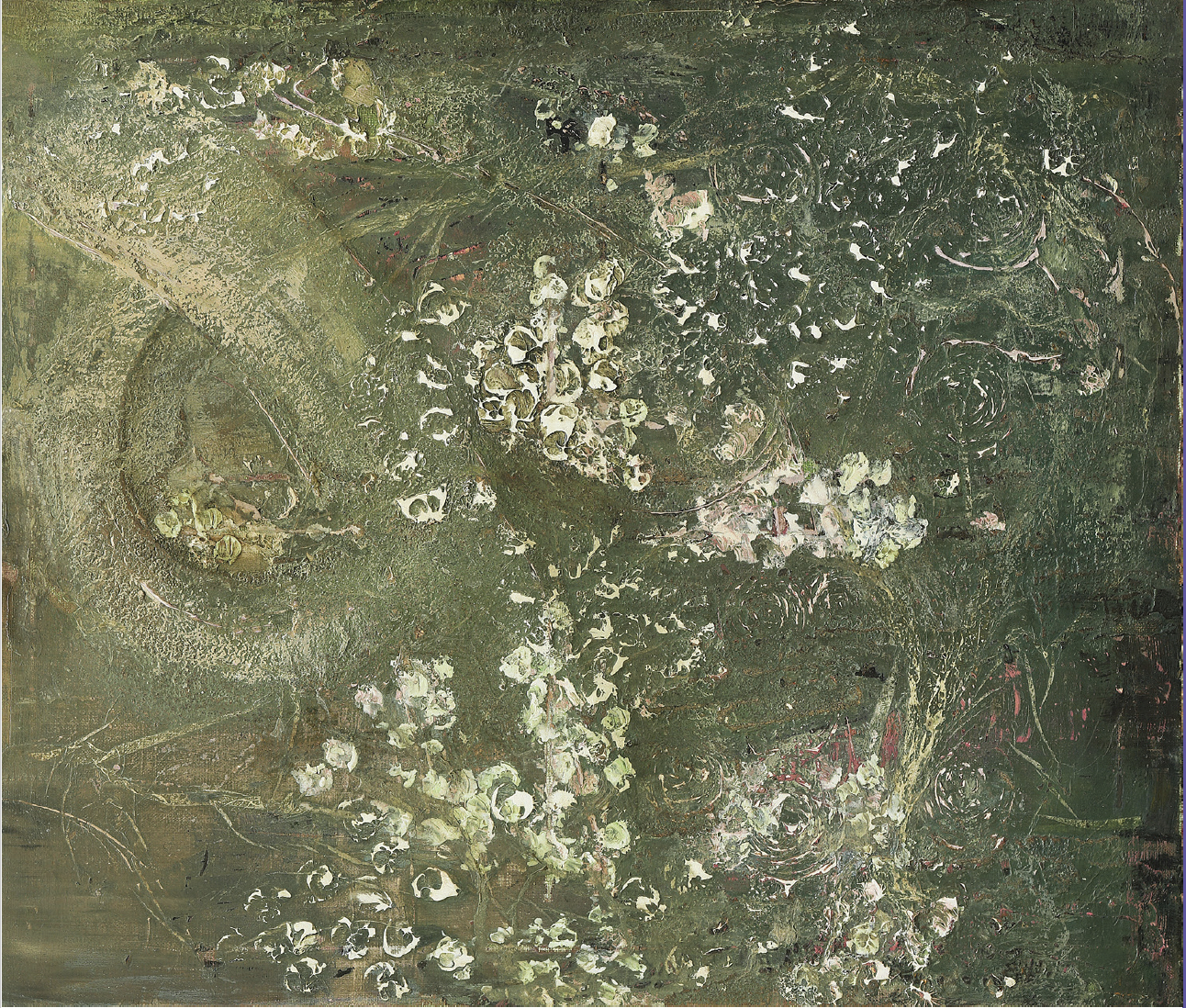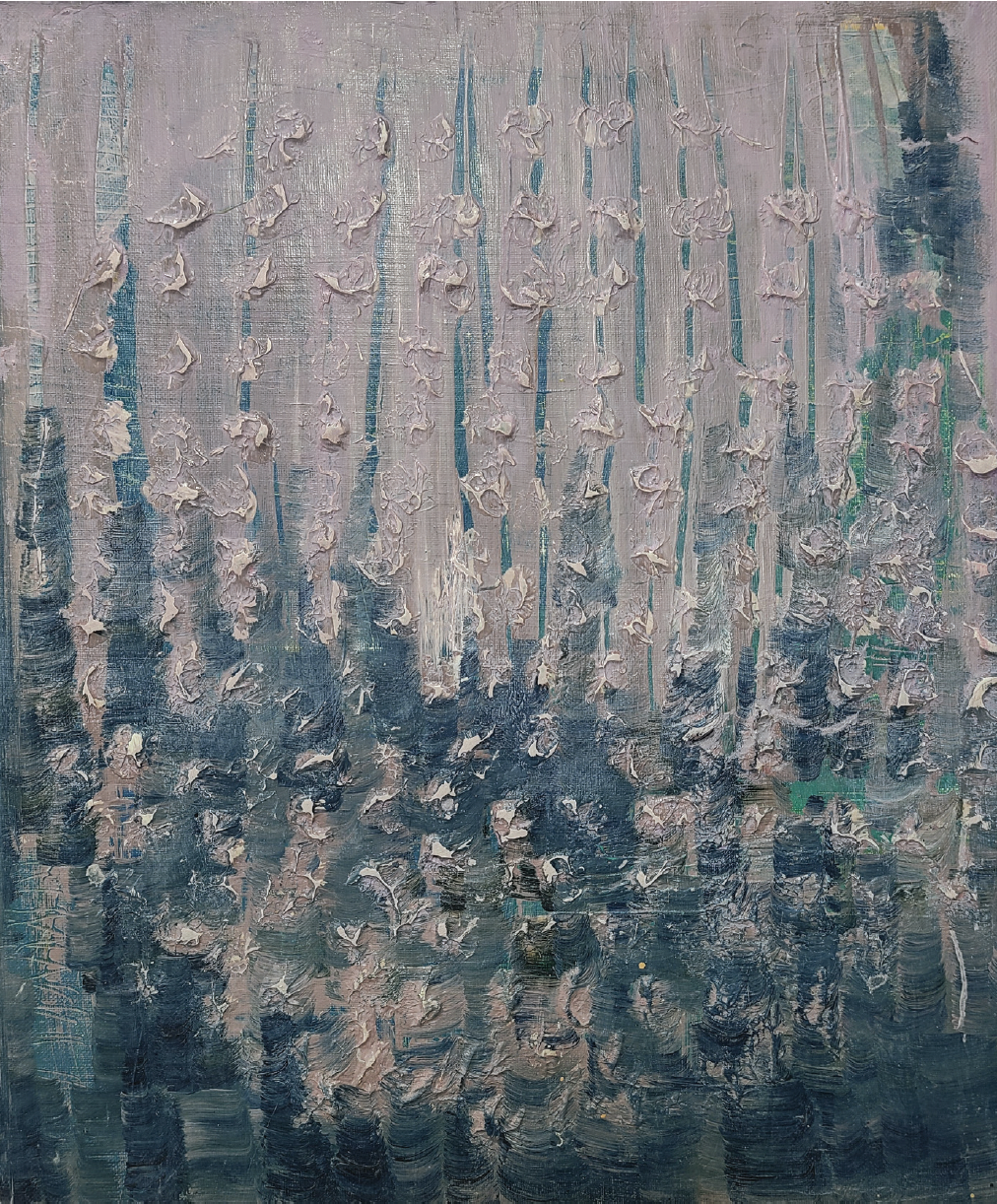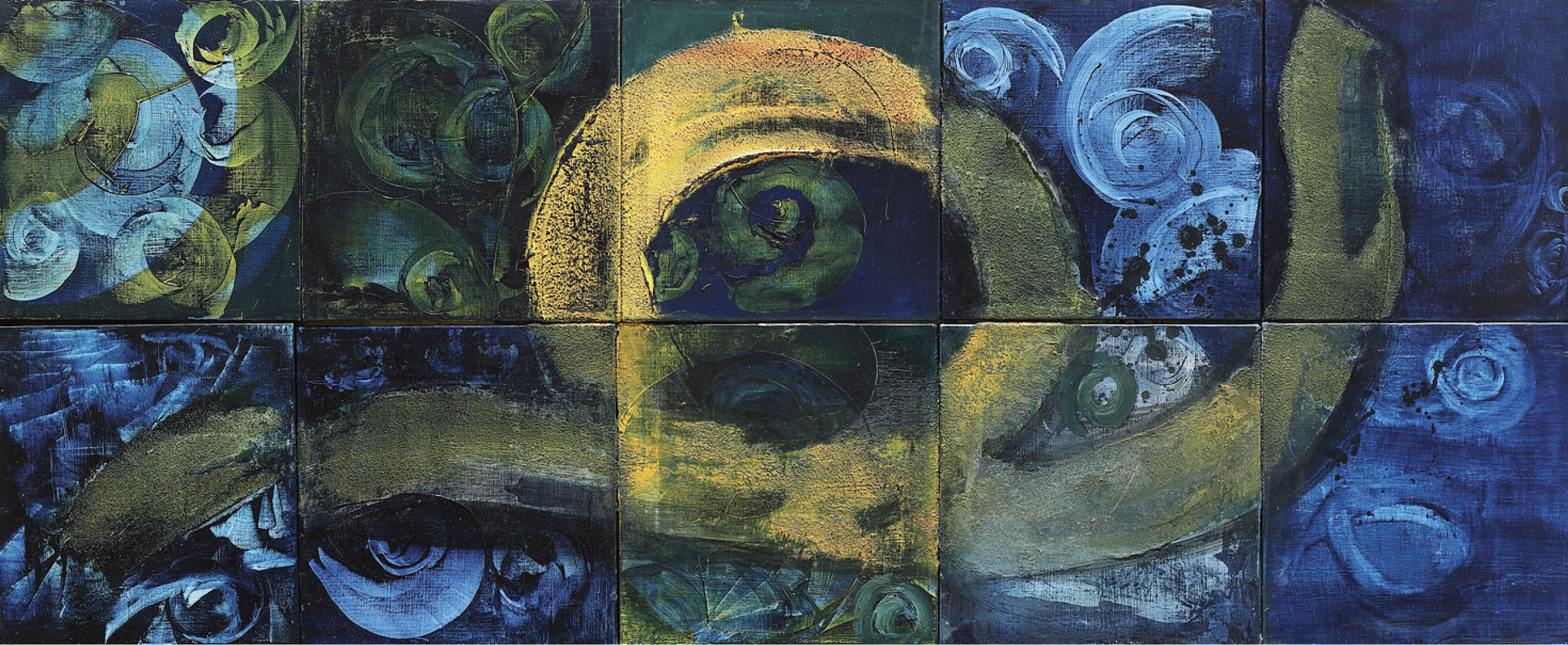It’s Time to Start
Kang Sung Soon
Opening Reception: Saturday, Oct 26th, 2024, 5-7PM
Exhibition: Oct 25-31, 2024
Together 15.2 x 15.2 in, Mixed Media and Oil on Canvas, 2024
The Delight of Life 12, 23.8 x 28.3 in Mixed Media and Oil on Canvas, 2023
A Peaceful Day, 20.8 x 17.9 in, Mixed Media and Oil on Canvas, 2024
The Delight of Life 25.2 x 63 in, Mixed Media and Oil on Canvas, 2023
It’s time to start
I remember being moved to tears by the sight of a newborn baby's pouty lips, wiggly toes, and cooing cries.
Perhaps tears of joy for the wonder of life and hope for a beautiful future. All life is mysterious and wondrous.
Each living thing is a universe in itself. My work is an imaginative expression of my desire and wish to bring out
the primal power within living beings and to depict the joy of life in the universe.
The countless dots and dancing circles represented in my work are human beings, life, stars, and the universe.
In nature, all life repeats the cycle of creation and destruction, emptying and filling. It is the ultimate joy and
beauty of the life force that all living things seek to live.
The time of exploring the fundamental nature of life is also the time of finding human identity. I hope that we
can sublimate that joy and beauty into enlightenment so that we can all gain the vitality of hope. I want to give
hope to those who are in chaos and sorrow through the life energy that has such a primal desire.
The Space of Painting: Thinking Outside the Box
Seo Younghee, (Professor, College of Fine Arts, Hongik University)
Sungsoon Kang's search for illumination not within her own existence, but beyond it, toward the unfamiliar outside, is reflected in this exhibition in a series of “conception” works, which are directed toward the dark and disordered state of existence, the chaotic outskirts of existence, understood in terms of the concept of “Khora,” the distant and unknowable primal state of birth. Color and line, light and darkness express the mysterious and unfamiliar world of consciousness that emerges before self-identity is clearly demarcated by symbols. In short, to use J. Kristeva's terminology, the semiotic symbols are the primordial and instinctive formative languages that resist the static biotic, the dynamic pictorial space. This may be the inevitable process of giving up being a rational subject in order to experience the essence of subjectification, in line with G. Bataille's paradox. In this ambiguity, in which the subject experiences a loss of individuality, the artist fills the painting space, which is a formative world as a generative text, with a series of external thoughts. Sungsoon Kang is a rare case of an artist who has regained her creative integrity through external thinking. Looking at the works in the exhibition, it can be seen that the artist is steadfastly leading the work of subversive thought through the establishment of firm subjectivation. As emphasized by G. Bataille and M. Foucault, he does not understand the subject of the act of production as something that is naturally given or has an immutable essence, but as something that is always generated and changed through the process of execution. As a result, his paintings are always flexible and improvisational, and each work is filled with a variety of interests that are not self-centered or subsumed by existing aesthetic norms. This unfolding process is confirmed by the way in which he drives a dynamic process of semanticization with impulses from the outer, unconscious realm, where the non-self is located. Disrupting and discarding the self in the symbolic realm rather than following a logical progression, the artist unfolds each canvas with a leap of freehand brushstrokes and vitalized coloration. It could be likened to the germinal dimension of life just before birth, a living manifestation of the fluidity and complexity of indeterminate life and the changeable, atypical state of cells before they solidify into symbols. In each painting space, which reveals the obvious stages of change along the cycle of multiplication-destruction-multiplication, the artist's nomadic brushstrokes are excitingly witnessed as he moves from one place to another (ailleurs), each time through the boundaries between the figurative and the abstract, the figurative and the figurative, the formal and the informal, the light and the dark, etc. Also, we can't overlook a short entry in one of his notebooks, “Looking at life in nature”: “My working time in nature is a time to express and dance with my eternal freedom. Through nature, I am able to see what is disappearing before my eyes, or what is distorted and forced familiarity, and bring it back to its primal nature.” In this concise note, the artist clearly alludes to the process of self-awareness through nature, where the ego is not the center, but rather nature outside of it, the driving force of his work. Only in nature, in the world beyond this existence, does the artist confess that he is free to reclaim his uncertain nature. Indeed, his paintings, especially the “Conception” series, in which the body's action is instinctive, align the space of nature with the space of the self, strongly indicating that this is the place of true existential experience. His recent works on the theme of nature, autopoietic images in various chromatic abstractions, show the abstract space of action as a place of dramatic contemplation where the essence of existence is experienced.
Art Critic Seo Younghee Excerpt from the review...




